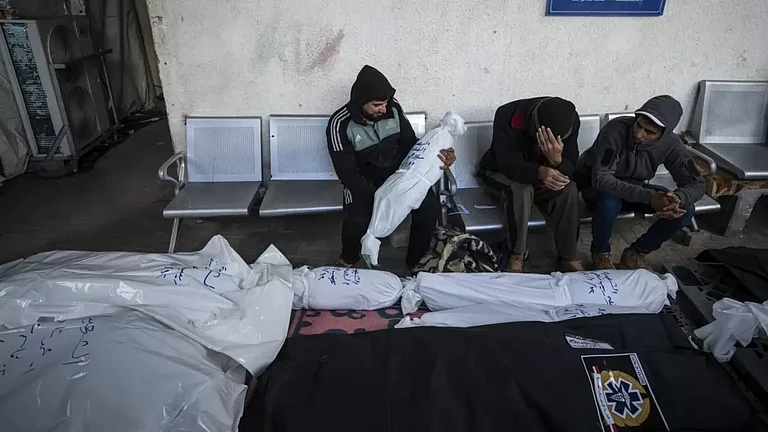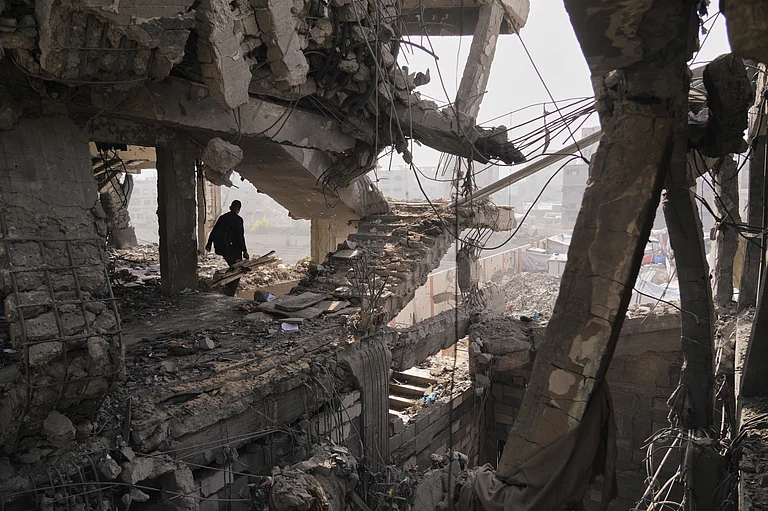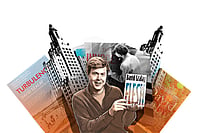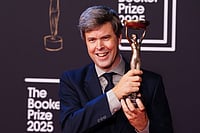Much like in Asian cultures, food is not just food for Palestinians. It’s the glue that holds together families and communities, the cherished thread that connects Palestinians —those who live in Palestine as well as members of the diaspora— to their land. Family feasts are a regular part of life. Some typical dishes include musakhan, maqlouba, manakish, stuffed vine leaves, stews, hummus, falafel, and delicious desserts such as knafeh and ma’amoul cookies. Palestinian food is flavourful — the flavours come from both the broth and an assortment of spices. Both meat dishes and vegetarian ones are popular. Olive oil, especially the lot available soon after the olive harvest of the season, is the beating heart of many a beloved recipe.
Wafa Sami, the creator of the popular site, ‘Palestine in a Dish’, used to enjoy the mouthwatering feasts in her parents’ home as a child. These were elaborate meals to which the entire extended family was invited. Sami grew up in Ramallah. She lives in California now and misses her mother’s cooking. “My mother would cook huge quantities of food and we would share it with our neighbours as well. Families and friends share food generously,” she remembers. “Also, Palestinians believe food is a gift from God and so, we find ingenious ways to make use of leftovers. Nothing is wasted or thrown away.”
A growing tribe of Palestinian chefs and influencers are showcasing Palestinian dishes, ingredients and recipes, sharing the glory of Palestinian cuisine with the world today. Some prominent names: Falastine Dwikat (a.k.a Chef Falastine) who is based in Ramallah; chef Fadi Kattan of ‘Akub’—Notting Hill’s favourite Palestinian restaurant; and Heifa Odeh, the innovative Palestinian-American food influencer.

Many Palestinian chefs who have bowled over people with their cooking say that when they were growing up, lockdowns and curfews imposed by the Israeli forces were common in their homeland. Cooped up at home with their families, they spent time in the kitchen, learning how to make traditional Palestinian dishes using indigenous ingredients. Food brought them comfort. Food became a refuge in the time of war and violence.
***
As with everything else, the Israel-Palestine conflict seeps into the matter of food too. The politics of water is something ordinary Palestinians, professional chefs, and farmers have to grapple with every day. After the Oslo Accords were put in place, Israel managed to gain a monopoly over water resources. Unequal access to water limits Palestinians’ choices. Palestinian farmers are forced to grow crops that require less water. They cannot compete with the settlement farmers who have unlimited water access and a wide range of choices in terms of what crops to cultivate.
Palestinian farmers have to pay high prices for water so their produce is pricier than that of settlement farmers. Ordinary Palestinians who have limited access to water too have to think twice before planting a herb garden or a garden in their backyards. Who can grow a garden when there is barely enough water for families to cook and bathe?
Israel’s bans (regularly imposed and then lifted) on a variety of food items such as pasta, coriander, lentils, and chocolate, to name a few, also affect Palestinians’ food choices as well as culinary experiments. Whether it is traditional Palestinian cuisine or fusion, chefs —amateurs and professionals— find themselves boxed in by these arbitrary and unnecessary bans.
Another major faultline in the politics of food is the fact that Israel often lays claim to Palestinian dishes and labels them Israeli cuisine. “Israel tries to lay claim to our land,” says Sami. “Is it any wonder they claim our food is theirs!” she asks, furious at these attempts at cultural appropriation. Many a time, dishes like hummus, falafel, and tabbouleh, all which have Palestinian origins are touted as Israeli dishes. This makes Palestinians everywhere baulk.
Tidbits (courtesy ‘Palestine in a Dish’)
** Palestinian knafeh is considered the most traditional and iconic dessert perhaps not only in Palestine but also across the Middle East. Knafeh typically consists of shredded or finely ground dough mixed in ghee or melted butter, layered with stretchy cheese, baked and then soaked in sugar syrup later.
** Chicken musakhan is a hugely popular national dish of Palestine. This delicious dish features seasoned roasted chicken placed over taboon bread covered with caramelised onions cooked in olive oil and spiced with sumac.
** Ma’amoul cookies feature a buttery crisp cookie primarily made of farina. The cookies can either be stuffed with sweet spiced dates, walnuts, or pistachios. These cookies are somewhat similar to shortbread. Ka’ek is commonly known in Palestine as the one stuffed with dates, and ma’amoul, on the other hand, is stuffed with nuts, either walnuts or pistachios.
** Palestinian cuisine includes a variety of savoury pastries that are full of flavour and add a great addition to any gathering. Just to name a few: sfeeha which is filled with meat, fatayer bi sabanegh (spinach pies), sambousek, or za’atar bread cheese balls. And the most popular one is za’atar manakeesh.



























